'The Damar Effect': Demand for AEDs surges, leaving those in need waiting
Rachel Moyer watched the football player crumple to the turf, saw the life-saving emergency response and knew this was it.
This was the television moment that would change conversations.
That would raise awareness. That would save lives.
Of course, it came in 2023. Twenty-three is a significant number for the Moyer family.
That's because Greg wore No. 23.
In a December 2000 photo of Greg Moyer, he is wearing his No. 23 jersey on the court with other eastern Pennsylvania high school basketball players. His eyes are fixed on the basket, his arms relaxed by his side. He's a sophomore. Forever 15.
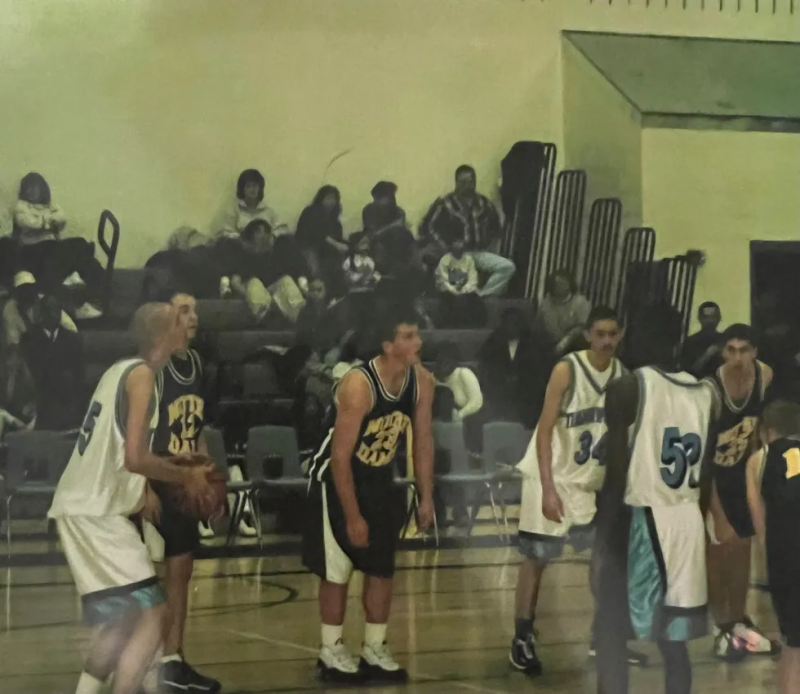
It was his first varsity high school basketball game ... and his last. During halftime, Greg collapsed from sudden cardiac arrest.
Unlike the football player ― Buffalo Bills safety Damar Hamlin ― who collapsed in January, Greg did not benefit from a timely shock to his heart from an automated external defibrillator (AED). People barely had cell phones in 2000, let alone what was then a $3,000-plus medical device.
The Moyer family has been speaking for Greg ever since through his memorial foundation, Greg's AED Fund. The foundation has donated thousands of AEDs nationwide.
For years, AEDs were readily available from manufacturers. Companies such as Zoll, Stryker, Phillips and Defibtech worked with foundations like Greg's. But COVID complicated that.
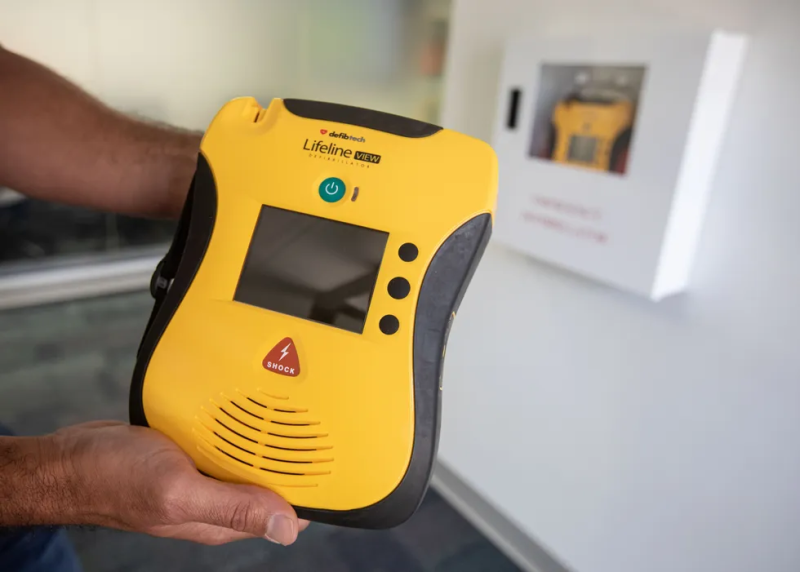
"Coming out of COVID, everything in the industry was on a shortage, whether it was a shipping shortage, an electronic-component shortage, a labor shortage," said AJ Pace, vice president of global marketing for Defibtech.
Then, during that Monday Night Football game in Cincinnati in January, 24 million viewers watched a professional athlete collapse from sudden cardiac arrest and witnessed the power of an AED.
Demand for the life-saving device skyrocketed nearly overnight.
"The world recognized if this can happen to an NFL superstar, it can happen to anybody," said Troy Pflunger, the vice president of sales for Zoll. "It’s turned up awareness and an eye to education."
That's what the industry now refers to as "The Damar Effect," and it has created a nationwide backlog of AED orders.
No manufacturer would quantify the shortage to The Courier Journal, but Defibtech and Zoll representatives said they have ramped up production.
High school and collegiate athletic trainers, as well as foundations that donate AEDs to schools, say defibrillators and their replacement parts are now, on average, backordered anywhere from 10 weeks to five months, depending on the distributor and manufacturer.
AEDs also need occasional battery replacements. An athletic trainer at an Ohio private high school said his estimated wait time for AED batteries now stands at 25 weeks.
'How are we going to help all these people?'
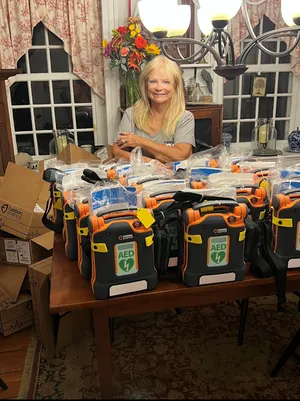
As the world celebrated Hamlin's save, Rachel Moyer recognized it as a sign from her son.
She wanted to honor both Pennsylvania-born athletes, so she called a high school on the other side of the state ― Central Catholic High School in Pittsburgh. She spoke with Brother Michael Andrejko. He told her they had three buildings on campus and only two AEDs.
The next week, Greg's AED Fund sent a life-saving device to the school ― also known as Damar Hamlin's alma mater.
Today, eight months later, Moyer has more than 150 AEDs on backorder.
Other foundations are feeling the same pressure from The Damar Effect. It's not only limiting the supply of immediately available AEDs, but also straining foundation resources.
Since January, In a Heartbeat ― a foundation run by cardiac arrest-survivor Mike Papale ― has received 72% more requests for free AEDs than it did in the previous seven years combined.
"It was good in that people are now taking action and realizing … we need to be prepared," Papale said. "But it also presented the challenge of being a small community organization. How are we going to help all these people?
"I'm always afraid to not help somebody because that could be the one person who needs it and the one place where something happens."
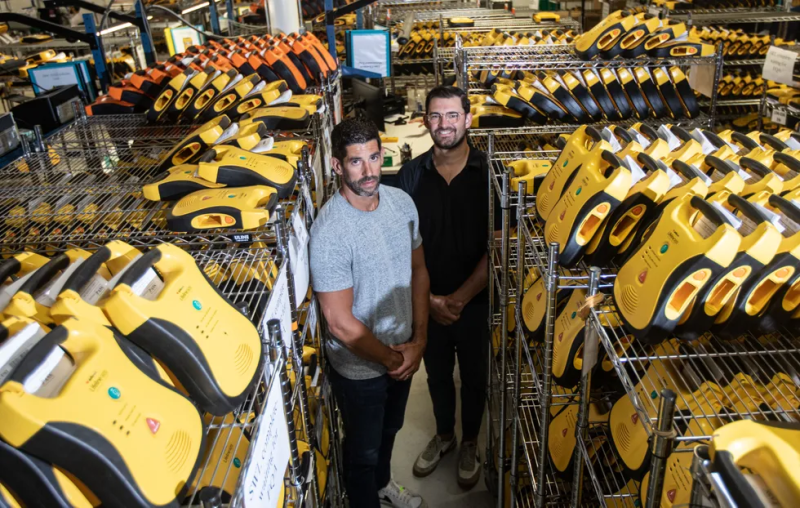
Papale also works full-time for Defibtech, the Connecticut-based defibrillator manufacturer, to help foundations gain access to AEDs and place them in their community.
In the last few weeks, In a Heartbeat helped set up 70 fundraising campaigns through Defibtech all across the nation.
"We just can't buy all of those AEDs at this time, but we can help you fundraise for it," Papale said.
Another high-profile cardiac arrest
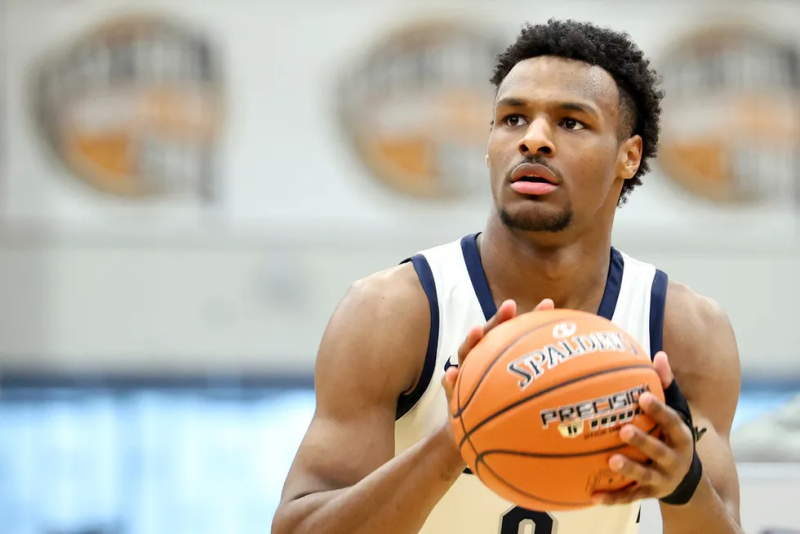
If anyone was wondering when The Damar Effect might wane, the collapse of USC basketball player Bronny James, son of LeBron James, in July put that question on hold.
In the three days following James' cardiac arrest and subsequent save, In A Heartbeat received 39 requests for a free AED.
And then there are the new laws. Lawmakers in several states, urged on by advocates, are pushing to require AEDs in schools. The federal Access to AED Act, which would mandate AEDs in schools, is also in front of Congress.
In March, Hamlin and a handful of families with foundations in honor of athletes lost to sudden cardiac arrest went to Capitol Hill to support the legislation.

"The demands are going to continue to tick up," said Pace, the Defibtech marketing vice president.
Pace mentioned a foundation for high school athlete Matthew Mangine Jr., who collapsed and died in June 2020 during high school soccer conditioning in Erlanger, Kentucky. His family ― mom Kim, dad Matt Sr. and his little brother, Joseph ― created the Matthew Mangine Jr. "One Shot" Foundation.
"(In Washington, D.C.), Matt said to the other families, 'We're part of a club that no one wants to be in,'" Pace said, getting emotional recalling the remarks. "He's taken that grief and turned it into something really good, but the flip side of that is he's creating all this awareness that just goes back to the foundation."
In its first three years, the Mangine's foundation has trained more than 4,000 people in hands-only CPR and donated 90 AEDs as far away as North Dakota and Texas.
In the weeks following Hamlin's collapse, the Mangine Foundation received more than 100 requests for AED donations. At the same time, the foundation took in less than the cost of one AED from donations.
"We want to help everybody," Mangine Sr. said. "It’s hard for me to say 'no.' We have to call each and every one of these people and just explain to them, 'I’d love to help, but unfortunately, financially, we can’t right now.'"
The cost of saving a life
Earlier this year, The Courier Journal, part of the USA TODAY Network, released Safer Sidelines, a multipart investigation that found more than 400 athletes died of sudden death in high school sports in the last 20 years.
Sudden cardiac arrest is the No. 1 killer of high school athletes. The investigation also found that adding one AED would cost less than $10 per sports participant for 99% of schools in Kentucky. The average cost statewide was $3.07 per participant.
Often, the cost of an AED is seen as the barrier, although the price has fallen over the past few decades from about $3,000 to about $1,000 per unit.
Pace hopes schools begin to view AEDs the same as fire extinguishers. You can't walk into a school in the U.S. and not see multiple hanging on the wall.
In terms of cost, Pace put it like this: "I’ll give you a million dollars … but you can’t wake up tomorrow. So, it’s like: What is the million dollars worth to you if you can’t wake up the next morning?"
Stephanie Kuzydym is an enterprise sports reporter, with a focus on the health and safety of athletes. She can be reached at skuzydym@courier-journal.com. Follow her for updates on Twitter at @stephkuzy.
Disclaimer: The copyright of this article belongs to the original author. Reposting this article is solely for the purpose of information dissemination and does not constitute any investment advice. If there is any infringement, please contact us immediately. We will make corrections or deletions as necessary. Thank you.







